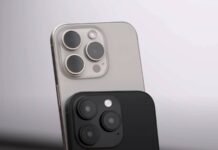
Incepem totusi cu Magic Mouse 2, designerii Apple sustinand ca produsul a generat multe “nopti albe” si consternare din cauza sunetului produs in timpul miscarii sale pe suprafetele plane, acestia nefiind multumiti de zgomot si fiind ferm convinsi ca il pot schimba.
Magic Mouse 2 arata exact precum Magic Mouse 1, insa in interior exista foarte multe schimbari, fiind redusa inclusiv suprafata de frecare dintre produs si masa, deci sunetul suparator pentru designerii Apple a disparut complet, utilizarea fiind mai silentioasa.
When we did the previous mouse we spent so much time dialing those feet, the material, the geometry, everything, so that it sounds good and feels good when you move it on the table,” says John Ternus, whose title is VP for Mac, iPad, Ecosystem and Audio Engineering. “But then you change the mass of the product and you change the resonant frequency of the product and all of a sudden the feet that we loved weren’t great anymore. They weren’t what we wanted.
Vorbind despre iMac, vicepresedintele diviziei de marketing din cadrul Apple, Phil Schiller, a afirmat ca produsele Apple sunt interconectate intre ele, compania incercand sa creeze cel mai mic gadget posibil pentru a face cat mai multe task-uri zilnice inainte de a ajunge la cel mai mare din linia sa de produse.
Mai exact, Schiller sustine ca utilizatorii ar trebui sa foloseasca fiecare produs Apple pentru un anumit tip de task-uri si nu toate in acelasi timp pentru aceleasi task-uri, deci fiecare produs este gandit pentru un anumit tip de utilizare, el fiind “perfect” creat pentru ea.
…The job of the iPad should be to be so powerful and capable that you never need a notebook. Like, Why do I need a notebook? I can add a keyboard! I can do all these things! The job of the notebook is to make it so you never need a desktop, right? It’s been doing this for a decade. So that leaves the poor desktop at the end of the line, What’s its job? Its job is to challenge what we think a computer can do and do things that no computer has ever done before, be more and more powerful and capable so that we need a desktop because it’s capable,” says Schiller. “Because if all it’s doing is competing with the notebook and being thinner and lighter, then it doesn’t need to be.
In ceea ce priveste posibila implementare a unui ecran tactil in iMac, designerii calculatoarelor Apple sunt ferm impotriva unei asemenea evolutii, Schiller afirmand ca utilizarea unui touchscreen pe un calculator este anevoioasa, iMac-ul fiind gandit pentru a fi folosit cu periferice.
When asked about the possibility of introducing an iOS-like multitouch display into the iMac line, the team behind the desktop computers remained adamant against such a move. Schiller reiterated that any input on a desktop that sits above keyboard level feels “uncomfortable” and that the iMac was built from the ground up with a cursor input in mind.
Mai multe detalii interesante gasiti in articolul publicat de catre jurnalistul american, acesta avand acces exclusiv si fara precedent intr-un laborator Apple pentru a discuta cu vicepresedintele diviziei de marketing si designerii care au creat produsele celor din Cupertino.
















